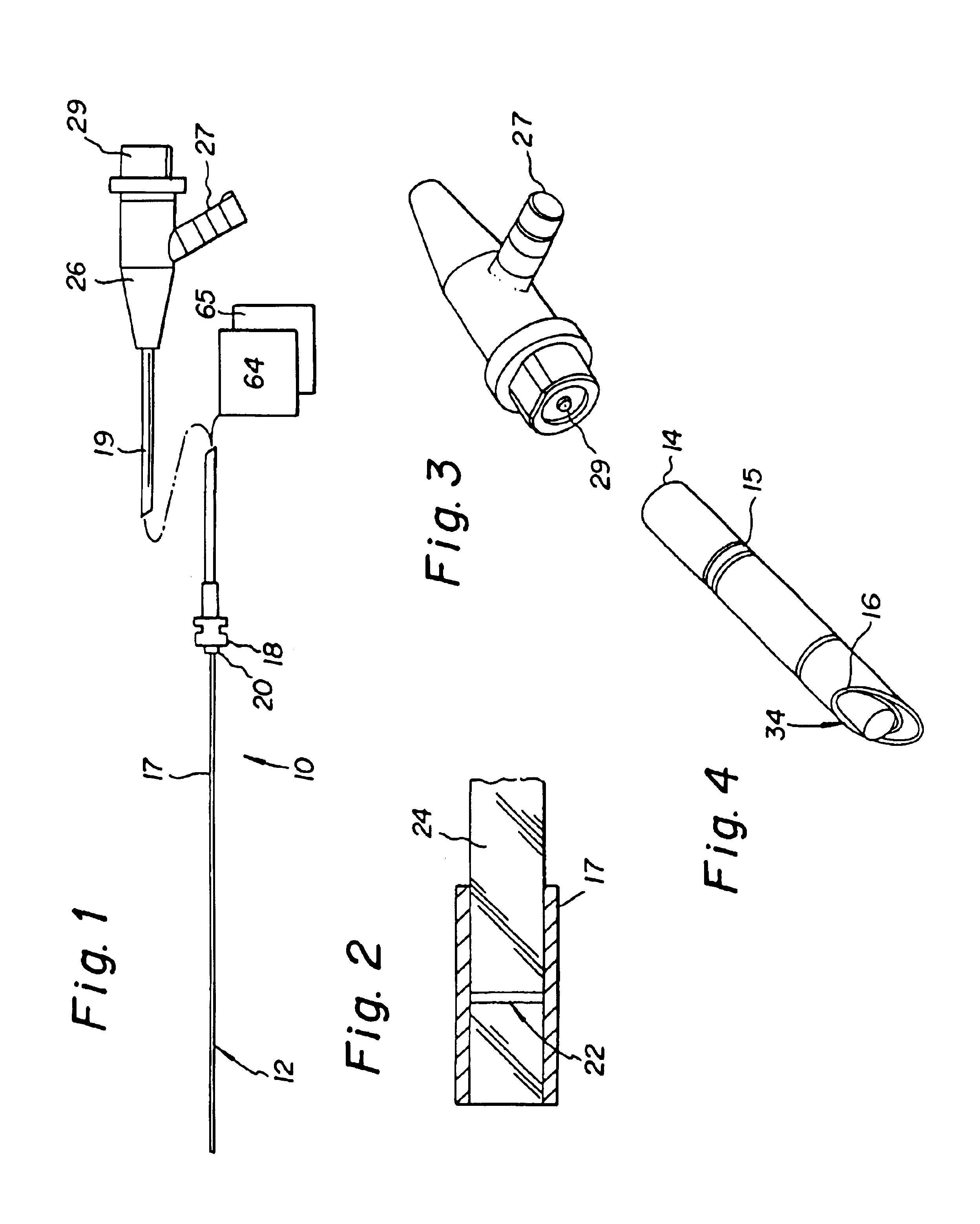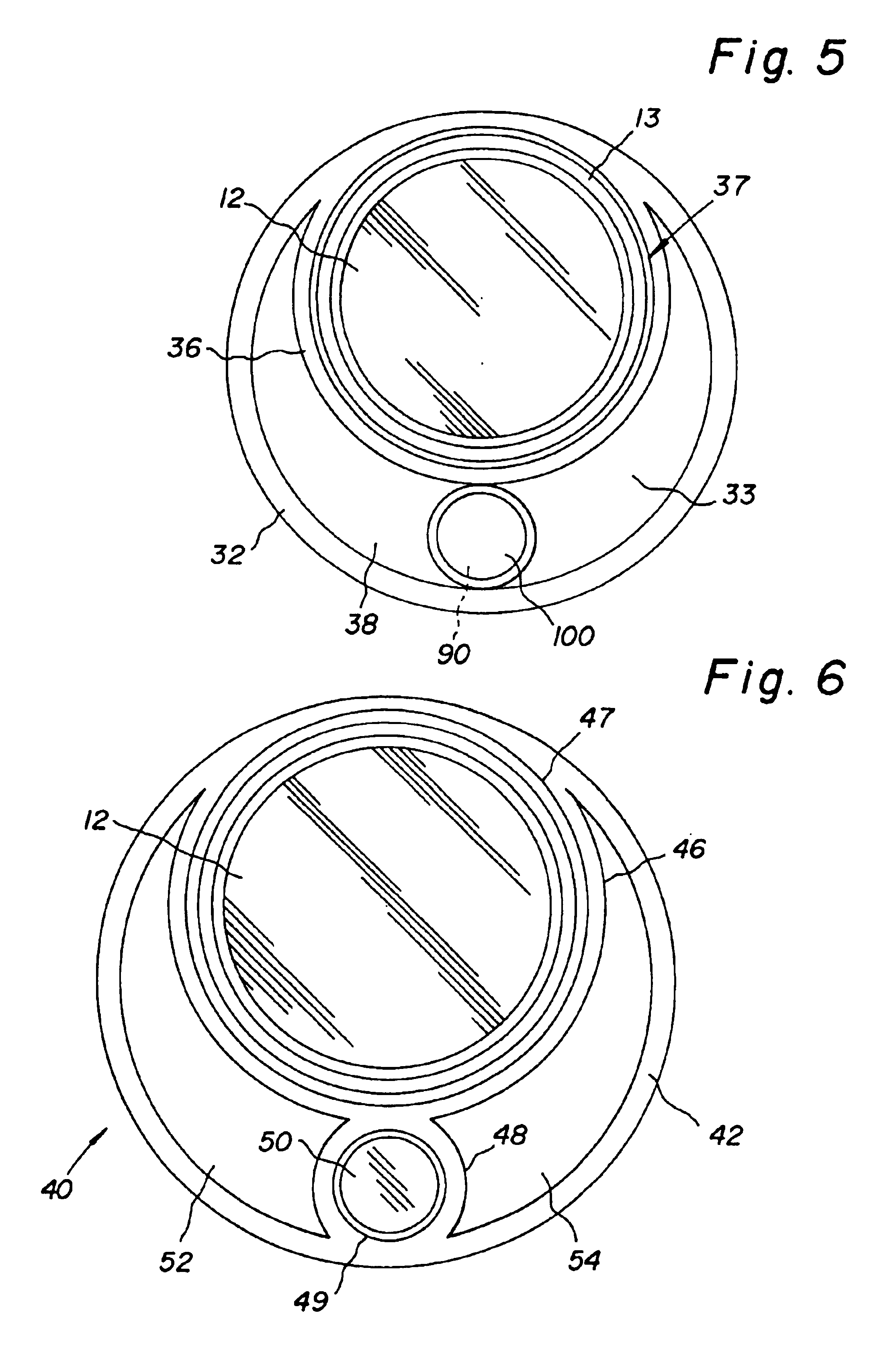Method and apparatus for in VIVO treatment of mammary ducts by light induced fluorescence
a technology of light induced fluorescence and mammary ducts, which is applied in the field of breast cancer treatment, can solve the problems of many unneeded biopsies, surgery and radiation, and up to 40% of breast cancer, and achieves the effects of easy cleaning and sterilization, high durability, and convenient handling
- Summary
- Abstract
- Description
- Claims
- Application Information
AI Technical Summary
Benefits of technology
Problems solved by technology
Method used
Image
Examples
Embodiment Construction
The present invention is directed towards a micro-endoscope assembly 10 which can be used and inserted into the lactiferous ducts of the breast of a woman patient and a method for locating and treating cancer cells in the duct. The lactiferous ducts generally range in number from about six to about twelve in women and lead from areas of the breast to the nipple where they are in parallel vertical orientation with each other. The ducts have a very thin cell wall ranging from 3 to 4 cells in thickness and are resilient. The ducts have a smooth inner surface and white color which resemble visually the interior of a standard PVC pipe.
The best mode and preferred embodiment of the invention is shown in FIGS. 1-5. The micro-endoscope assembly 10 consists of tube or guide cannula 14 which seats and guides the endoscope 12. The cannula 14 has an outer cylindrical wall 16 which defines an internal passageway which runs along its length to seat and guides the endoscope 12. Cannula tube 14 may ...
PUM
 Login to View More
Login to View More Abstract
Description
Claims
Application Information
 Login to View More
Login to View More - R&D
- Intellectual Property
- Life Sciences
- Materials
- Tech Scout
- Unparalleled Data Quality
- Higher Quality Content
- 60% Fewer Hallucinations
Browse by: Latest US Patents, China's latest patents, Technical Efficacy Thesaurus, Application Domain, Technology Topic, Popular Technical Reports.
© 2025 PatSnap. All rights reserved.Legal|Privacy policy|Modern Slavery Act Transparency Statement|Sitemap|About US| Contact US: help@patsnap.com



